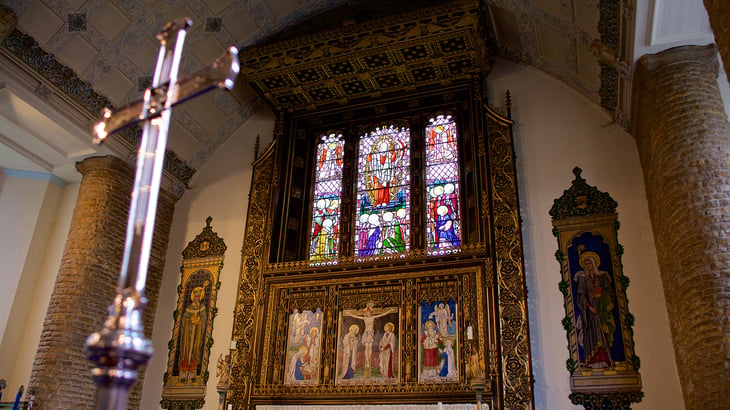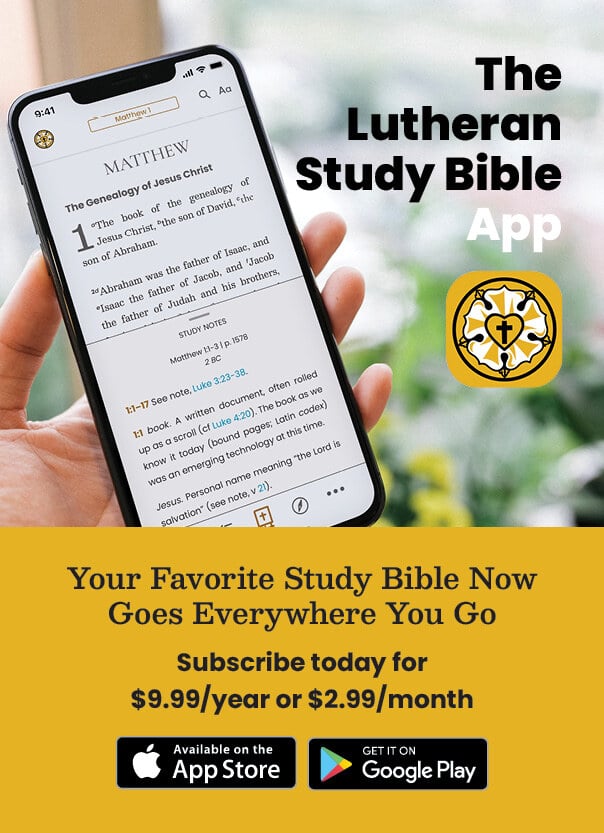Resources for Milestone Ministry in 2025
Second and third graders and their parents look throughout their home for pens, pencils, highlighters, and sticky notes as they prepare to dig into the Bible together at home—along with other families in their church at the same age and stage! This is just one of the ways churches can engage families in the time after their child is baptized and before their child is confirmed. This is what Milestone Ministry is all about.
Overview of Early Childhood Enduring Faith® Religion Curriculum
Families and educators share the role of encouraging children toward faith that endures a lifetime. That is why Concordia Publishing House created the Enduring Faith Religion Curriculum for Preschool–8th grade. Now, we are excited to share with you that Early Childhood has been added to the Enduring Faith family! Continue reading to learn more about this curriculum and how it nurtures the little ones in your life on their faith journey.
Influencing Children’s Identity through Electronic Technology
Little has had a more dynamic impact on contemporary culture than electronic technology. I would argue that electronic technology is our feeble human attempt to copy God’s astonishing creation of our capability to communicate who and whose we are. This creative package includes the brain and its extended nervous system components, including the eyes, ears, mouth, nose, and communication modifiers—memory, emotions, and body posture, to name a few.
How to Select a Trustworthy Children’s Bible
Children’s Bibles serve a useful purpose in our homes. From the time our firstborn was four months old (in other words, when we emerged from our sleep-deprived fog enough to realize it was possible to start an intentional bedtime routine), we have read Bible stories with our children before bedtime. We started with an illustrated beginner’s Bible, moving up to Bibles with more of the stories and more details as our kids get older. Now we go back and forth between the Bible and storybook Bibles (as we have a wider range of ages in our family).
The Importance of Bedtime Stories
When I was a child, my bedtime routine always ended with a story. After dinner, my sisters and I would have about an hour to finish up anything we needed to finish and then the routine would commence. It started with the normal things: showers, hair brushing, teeth brushing, flossing, and so on. Once we were sufficiently clean, my mom would allow one of us to pick out a book from the big bookshelf in the play room, and we would sit at the kitchen table as she read to us. We knew after the story was over, that it was time to go to bed. I have many memories around that kitchen table at bedtime.
Early Childhood Activities Anchored to Truth and Stability
“Jesus Christ is the same yesterday and today and forever” (Hebrews 13:8).
More than anything, I want my kids, throughout their lives, to know how loved they are. I want them to savor the beauty of God’s creation, to know His peace, and to pour out His love. With recent school closures and social distancing guidelines, reorienting myself and my family to the new normal has added complications to my already messy life. I’ve also wrestled with what to share, how to share it, and what to omit for my kids’ protection to anchor my family more intentionally to Christ instead of fear. While our regular schedules have been upended due to the current pandemic and worldwide angst, we’ve also been given a unique opportunity to go back to a lifestyle that was commonplace before the 19th century—a time of embracing familial tasks and sharing with our neighbors and loved ones in an intimate way.
Sharing the Gospel through a Storybook Bible
I grew up with one Bible in my household. It was a children’s storybook Bible. Featuring over a hundred stories from the Old and New Testaments, it was my only look at the Word of God. It had pictures that had been illustrated by children around the world paired with a short paragraph of text that summarized the story of each specific passage. That version of the Bible was my only way to God’s Word.
Resources for Teaching the Faith at Home
Being a teacher involves patience, dedication, passion, lots of hours, and above all, love for your students. In these times of uncertainty when so many don’t know when they will be returning to school, how schools may look in the future, or if students are hearing the loving words of Jesus that they desperately need, be certain Jesus is with us as our guide.
Teaching Little Ones: About the Altar
Church services can sometimes be confusing for little ones. They will have questions about what they are seeing. Teaching young children about the individual parts of the church service can seem daunting. And it starts with learning yourself what it all means! It’s a great opportunity to help them grow and understand the symbols of our Christian faith. This is the second post in a series on teaching our youngest churchgoers about the parts of the service.
Teaching Kids About Pastor’s Vestments
Church services can sometimes be confusing for little ones. Why is it so quiet? Why does pastor wear that funny robe? Why do we say the same thing every week? Teaching young children about the individual parts of the church service can seem daunting. And it starts with learning yourself what it all means! This is the first of a series of posts on teaching our youngest churchgoers about the parts of service.


























